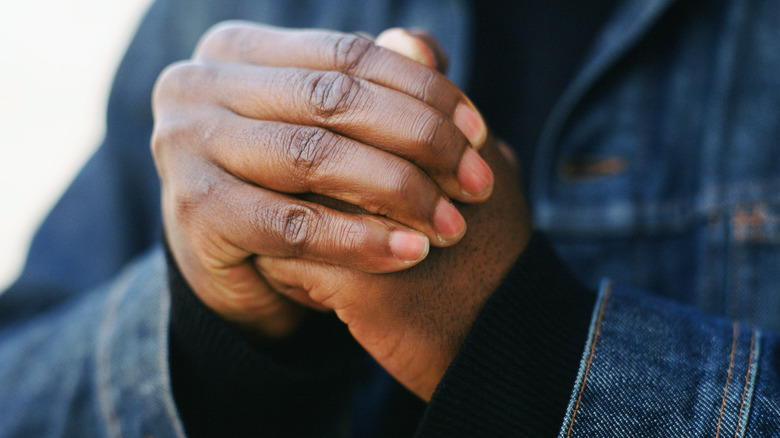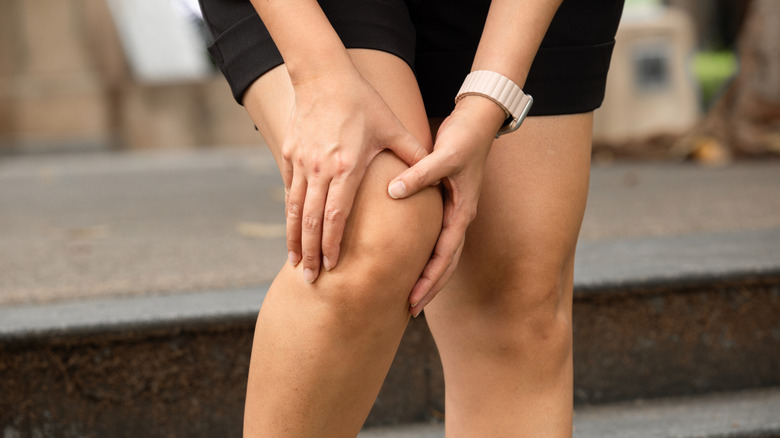It might make you cringe, or it might bring you sweet, satisfying relief. Cracking your knuckles is one of those oddly divisive habits. Some people do it absentmindedly, while others can’t stand the sound. Some people can’t crack their knuckles at all. Maybe you were scolded as a kid for cracking your knuckles, warned that your fingers would swell up or that arthritis was lurking in your future.
That’s a myth, said the founder of Rheumatologist OnCall Diana Girnita M.D., Ph.D., FACR in a Health Digest interview. Popping or cracking your joints on purpose isn’t harmful to your joints, but she warns not to make it a regular practice. “[Cracking your knuckles] too often or too forcefully may lead to joint instability over time by overstretching the surrounding ligaments and tendons,” she said.
Whether you crack your knuckles yourself or you’re one of those people who glare at that colleague who does, something interesting goes on inside your joints that you might not be aware of. Girnita explained why your joints make that popping sound.
What makes that pop when you crack your knuckles
“Cracking your knuckles” is actually a bit of a misnomer. You’re not really “cracking” your joints or causing any damage. In fact, the sound you hear isn’t even coming from the bones themselves. Rheumatologists like Girnita refer to these noises as “crepitus,” a term that describes the harmless popping, snapping, or grinding sounds that joints can make. And while it might seem alarming, it’s completely normal.
“One of the main reasons it happens is due to gas bubbles in the joint fluid, called synovial fluid,” Girnita explained. “These bubbles form and collapse as you move or stretch, creating the ‘popping’ sound.”
If you’ve ever stood up after sitting for a long time and heard a pop from your knees or hips, that’s less about the gas bubbles in your joints. “[Crepitus] can also occur when ligaments or tendons — the tissues that connect and stabilize your joints — shift slightly out of place and snap back during movement,” Girnita said. “This is particularly common in larger joints like the knees, shoulders, or ankles.”
Possible side effects of cracking your knuckles
Ever notice that once you crack your knuckles, you can’t crack them again right afterward? That’s because you’ve already released the bubbles of gas in the synovial fluid. Once those bubbles are released, it takes time for new ones to form before you can get that cracking sensation again.
Girnita noted there might be some side effects if you crack your knuckles too frequently. “While cracking your knuckles does not cause arthritis, doing it frequently may lead to joint instability and weaken the grip in the hands,” she said. “Plus, tendons that repeatedly snap over bones may become irritated or inflamed, leading to discomfort or even pain.”
How much is too much? A 2017 study in Hand Surgery and Rehabilitation compared the grip strength and thickness of the knuckle cartilage of habitual knuckle crackers with those who don’t crack their knuckles. Those who cracked their knuckles five or more times a day had thicker cartilage in the knuckles of both of their hands. Their grip strength wasn’t affected by their knuckle cracking.
Popping in your joints can be a sign of wear and tear
While cracking your knuckles or an occasional pop in your joints is harmless, Girnita said your joints can make sounds that signal problems. “In some cases, joint cracking can also be due to cartilage wear and tear, especially as you age,” she said. “When the cartilage thins or becomes uneven, the bones or joint surfaces might rub against each other, leading to a grinding or popping sound.”
(Read why your hip pain might be more serious than you think.)
If the grinding sound is accompanied by pain, it could be a sign of osteoarthritis. Although osteoarthritis is typically associated with older adults, younger people could see signs of this condition if they sustain an injury to a particular joint, such as a knee. People with osteoarthritis might feel pain in their joints in the morning or after being in the same position for a while. The joint may also feel unstable, and you might find the joint has a limited range of motion.



